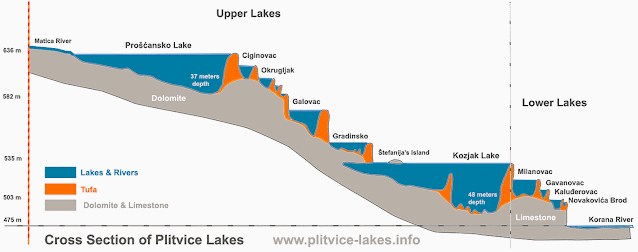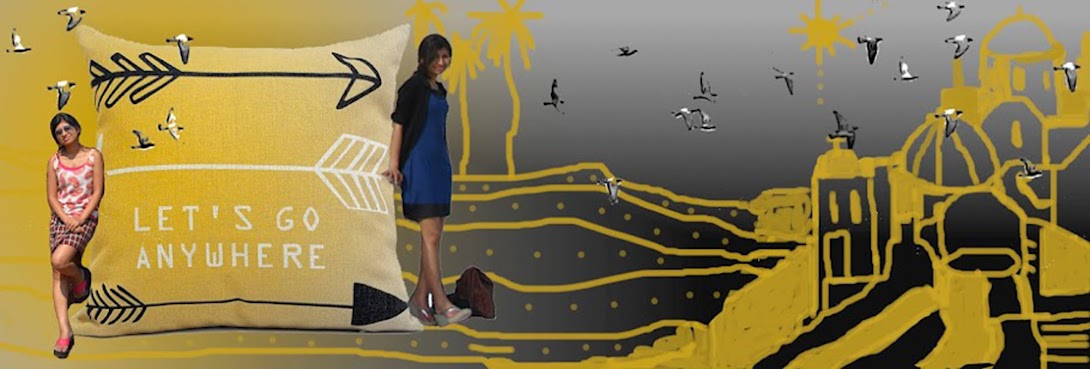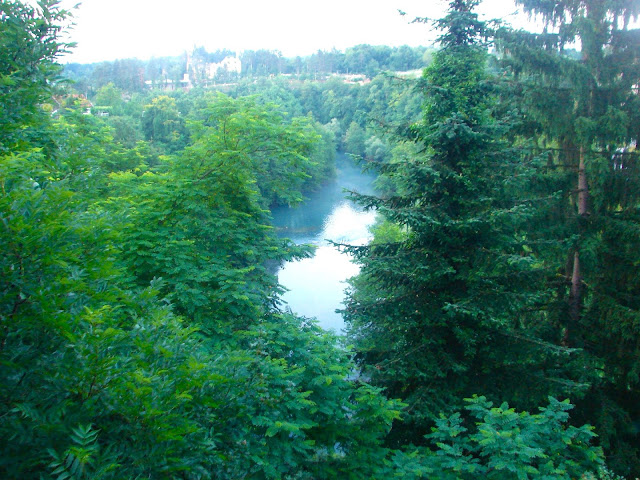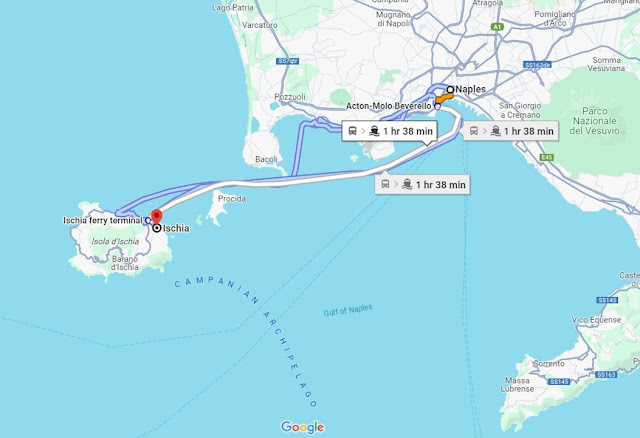Our 30-day Europe trip covered parts of Italy, Switzerland, and Croatia. I had been to Italy and Switzerland but this time my parents and cousins decided to join us. With parents, backpacking was not an option. So, we had a good number of breaks in Milan. The trip started in mid-June and ended in mid-July. Must make a mention that summer in these parts was not a great idea. Not even Switzerland! Global warming has pretty much messed up the seasons big big time! I was shocked to find Switzerland a lot warmer than usual. The hotels did not have fans or air-conditioners for obvious reasons but we did feel the need for one. Croatia was the warmest! I have vowed, that trips to southern Europe in summer are definitely a no-no!
We flew from Delhi to Milan Via Kuwait on Kuwait Airways. I have flown Kuwait Airways a few times and have found it pretty good. Food and service were good and the layovers in Kuwait were comfortable. This is not a sponsored blog, hence be assured it's genuine feedback.
Itinerary:
Day 1 - Day 3: Milan, Italy
We have family in Milan, so took a pre-trip break in the city. Didn't do much, just relaxed and explored the Garibaldi area (pretty much the center of Milan) where we were staying.
 |
| Basilica Di San Simpliciano in Garibaldi |
Day 4 - Train to Tirano, Italy
On day 4 we took an early morning train to Tirano. The train ride was a scenic 3-hour journey along Lake Como. Trains in Italy are quite comfortable and convenient.
 |
| Lake Como clicked from the train on the way to Tirano |

Tirano is a small Italian city close to the Italy-Switzerland border. We were going to board the famous Bernina Express at Tirano. The idea was to spend a couple hours in the city and then head towards Chur. Had I known I would fall in love with Tirano, I would have planned an overnight stay in the quaint little city.
 |
| Santuario della Madonna |
 |
| Places of interest in Tirano |
Day 4 - Bernina Express from Tirano to Chur, Switzerland
 |
| The Bernina Express Rhaetian Railways Route is one of the most scenic train routes in the world. The section between Tirano and Thusis is listed under the UNESCO World Heritage Sites. |
 |
| Spiral Viaduct Brusio turns almost 360 degrees and is one of a kind. |
 |
| Landwasser Viaduct - An engineering feet. This massive dolomite limestone structure is one of the highest viaducts built for rail tracks. It's 213 feet high and 466 feet long and is supported by six 66 feet wide arches |
Day 5 - Chur
On the banks of the Rhine, surrounded by the Alps, Chur is a perfect weekend getaway for a quiet stay. It is the oldest City or one of the oldest cities in Switzerland.
 |
| Places of interest in Chur |
 |
| The Alpine City of Chur is surrounded by the mountains Calanda (in the north), Montalin (in the east) and Brambruesch (in the south) |
Day 6 - Bernina Express from Chur to Tirano
 |
Palu Glacier is one of the large glaciers in the Bernina Range of the Rhaetian Alps
|
 |
| Lake Palu at the foot of Palu Glacier seen from Alp Grum station |
 |
| Lake Bianco near Bernina Pass |
Day 6 - Train to Milan
Day 7 - Milan
On the 7th day, we took a break in Milan again and spent most of the day shopping at the Duomo malls.
Day 8 - Bus to Venice, Italy
The next day we headed for Venice. We reached Venice in the late afternoon. Last time we stayed in Venice. This time we decided to stay in Mestre. However, to explore and experience Venice better I suggest staying in Venice instead of Mestre.
Day 9 - Venice
Venice was way more crowded than ever and the summer was too hard to bear. As per my experience, September definitely is a better time to visit than June/July.
 |
| The Rialto Bridge on the Grand Canal |
Day 10 - Bus to Zagreb, Croatia from Venice
 |
| Bus was the fastest means to get to Zagreb from Venice and was pretty much hassle-free. We had to stop for a few minutes at the border to get the passport stamped. Rest it was a direct 4-hour ride. |
 |
| Places of interest near Zagreb |
 |
| Places of interest in Zagreb |
We were in Zagreb for only a day. Just explored around the Zagreb square and had a chance to attend a music fest at the square. Must mention, Zagreb has the best bakeries. I couldn't get enough of the bakery items - Simply yummy:)
Day 11 - Bus to Slunj, Croatia from Zagreb
The bus ride to Slunj was quite uneventful and took about an hour and a half. Slunj is a tiny town and a perfect place to spend a few quiet days away from the hustle and bustle of city life. If one enjoys fish, this is the perfect place for trouts and other freshwater fish. Our main destination was Plitvice National Park which was just 30 minutes away from Slunj. The two lodges in Plitvice were all full due to peak season and our best bet was to stay in Slunj.
The only problem living in Slunj was the transportation. If one has a vehicle or has rented a vehicle there is no issue but if there is no vehicle, getting a cab or bus here is a bit difficult. Also, language is a bit of a problem, We booked the flix bus online for our travel to Plitvice but the bus never got there or didn't stop at the stop it was supposed to come to. Luckily one person who understood English, helped us with another bus, or we would have completely missed our trip to Plitvice. We did lose some hours due to the bus fiasco. The details of Plitvice are in another post.
Day 13 - Slunj
Slunj is a small town closest to Plitvice National Park. We didn't get accommodation at the National Park Lodge since it was the peak season and Slunj-Rastoke was the next best option. The location is barely 30 minutes drive. If one has a rented car, Slunj would be the best place to stay. If not, it may get a tad bit inconvenient, since taxis are very expensive and buses do not have a fixed schedule. We did not have a car, so were dependent on public transportation because of which we had to leave the park earlier than we had planned. The scare was if we missed the last bus we would be stranded or shell out a bomb for a taxi.
I loved the stay at Slunj. The bed and breakfast was cozy with a beautiful view of the river in the backyard. For fish waters, it's a perfect place. We had a scrumptious lunch and breakfast of fresh river fish.
 |
Slunj River
|
 |
| Rastoke Waterfall |
 |
| Korona River Karst Topography |
 |
| Karst topography can be seen all through this region |
 |
| National Parks in Croatia |
Day 14 - Bus to Split from Slunj via Zadar
On the 14th day, we headed for Split via Zadar. The ride was scenic for the most part, particularly after Zadar, when the bus went along the sea coast.
 |
| Zadar Seafront on the way to Split |
 |
| Sibenik on the way to Split |
Day 15 - Split
Split is one of the oldest towns in Croatia. We stayed in a bed and breakfast very close to the old town. The only negative was the weather. The scorching heat made it very difficult to walk around. We didn't venture beyond the old town because of the sweltering climate and any which way, the old town had most of the places of interest.
 |
| Places of interest in southern Croatia |
 |
| Places of interest in Split |
 |
| Places of interest in Split Old Town |
 |
| Diocletian Palace, Old Town, Split |
 |
| St. Domnius Cathedral |
 |
| Crypt of St. Domnius Cathedral |
 |
| Temple of Jupiter |
Day 16 - Ferry to Ancona, Italy from Split
We took an overnight ferry from Split to cross across the Adriatic Sea to Ancona, Italy. It was an enjoyable cruise. We reached early morning. The Ancona railway station was close to the port. We took a bus from the port to Piazza Kennedy.
 |
| St Domnius Cathedral from the Port of Split |
Day 17 - Ancona to Rome, Italy
The train from Ancona to Roma was about 4 hours. We did not have to wait long at Piazza Kennedy.
 |
| Ancona Railway Station |
Day 18 and 19 - Rome
In Rome, we hired a taxi during the day and took a night tour bus for the night. The night tour is recommended if one has time, because the monuments are lit and look beautiful. Rome is well connected by subways and buses. If one has time and energy one can opt for the buses and trains for the city tour. We didn't have time and we had senior citizens with us who had a tough time walking in the sun. So the taxi was our best bet. However, taxis cannot go too close to the monuments, so walking cannot be avoided. Rome should be avoided in summer if one wants to enjoy the historic monuments in detail with time.
 |
| Colosseum |
 |
| River Tiber |
 |
| Places of interest in Rome |
Day 20 - Train to Naples, Italy from Rome
There are trains to Naples every 1 hour from Rome central. It is a short 1-hour journey. Our hotel in Naples was just within walking distance from the Naples station. Again, the heat actually drained us out and we explored a lot less than we planned to in Naples.
Day 21 - Naples
 |
| Places of interest near Naples |
 |
| Places of interest in Naples |
 |
| Mount Vesuvius from Naples Bay |
Day 22 - Train to Pompei, Italy from Naples
Our first destination from Naples was Pompeii and Vesuvius. The Railway station for the train to Pompeii was very close to our hotel. At Pompeii station, the archaeological site was also within walking distance. The Archaeological park is big and yes gets difficult in hot weather. If I had known, I would have never planned a summer trip.
 |
| Mount Vesuvius from Pompeii |

 |
| Places of interest in Pompeii |
Day 22 - Bus to Mount Vesuvius from Pompeii
There are buses that take tourists to mount vesuvius from Pompeii and bring them back to Pompeii station. There is a short trek to the volcano's caldera. The soil is very soft and wearing shoes is a must. I had sandals on and it kept getting stuck in the sand and slowed me down both the climb up and down. My parents skipped the trek.
 |
| Caldera of Mount Vesuvius |
Day 22 - Train to Naples from Pompeii
Day 23 - Ferry to Ischia, Italy from Naples
Naples Port was also within walking distance from our hotel. We didn't quite plan where to go but saw a ferry to Ischia and we bought the tickets.
 |
| Places of interest in Ischia |
 |
| Arogonese Castle Island, Ischia |
Day 24 - Ferry to Capri, Italy from Naples
We took the ferry to Capri from Naples Port on the 24th day. From Capri, we took a Ferry to Amalfi. We just spent a few hours in Amalfi. Most of the places of interest in Amalfi are near the port. From Amalfi, we took a ferry to Salerno. From Salerno, we took a train back to Naples.
 |
| Places of interest in Capri |
 |
| Capri boat ride |
Day 25 - Ferry to Amalfi, Italy from Capri
 |
| Main Cities of Interest in Amalfi Coastline |
 |
| Places of interest in Amalfi |
 |
| Amalfi Coastline |
Day 26 - Train to Messina, Italy from Naples
 |
| Strait of Messina |
On the 26th day, we took the train to Messina. At the Messina strait, the train was taken across in a train ferry, something I had witnessed for the first time. At Villa San Giovanni, the train tracks are connected with the tracks on a ferry. The train is then moved onto the ferry. The passengers can go to the ferry deck if they choose. The ferry sails the train across to Messina port, where the tracks are connected back to the land tracks and it travels to the Messina railway station, about 10 minutes away. Our hotel was very close to Messina Duomo which is very close to Messina Central. There are trams and buses well connected to every part of Messina. We took a bus from the station to our bed and breakfast which looked like a luxury guest house.
 |
| Places of interest near Messina |
 |
| Basilica Cattedrale Di Santa Maria Assunta in Old Town Messina |
 |
| Places of interest in Messina |
 |
| Places of interest in Messina's old town |
Day 27 - Train to Taormina, Italy from Messina
We took a train to Taormina. Then a taxi from the Taormina station to reach the old city of Taormina. The ride was around 45 minutes. The old town is located on a hilltop. Mount Etna can be seen clearly from the Taormina amphitheater.
 |
| Places of interest in Sicily |
 |
| Places of interest in Taormina |
 |
| Duomo di Taormina |
 |
| Mount Etna seen from Taormina Amphitheatre |
 |
| Ionian Sea |
Day 28 - Train to Palermo Italy from Messina
On the 28th day, we took the train to Palermo. We reached at midnight and I was a little scared considering Sicily did not have a very good reputation in terms of the mafia. However, it seemed more a movie thing, cause it turned out all fine. There were taxis outside the station and we got to our bed and breakfast safe and sound. The interesting part was the Villa apartment was gated and there were several gates to pass through. Even the lift up was locked and the owner of the luxury BnB reminded me of a character from Godfather in the way he dressed and spoke :)
Day 29 - Car to Segeste and Erice from Palermo
The owner of the Villa arranged for a car for us to travel to Segeste and Erice the next day. The driver too reminded me of a character from Godfather. Perhaps it was the accent and the way he dressed. He was a friendly guy and showed us around with patience and guided us well. I loved Erice and if I had more time would have planned a stay there. Just the right kind of place to have a quiet vacation - close to the sea and historic heritage.
 |
| Places of interest in Calatafimi - Segesta |
 |
| Greek Temple in Segesta |
 |
| Amphitheatre in Segesta |
 |
| Places of interest in Erice |
 |
Chiesa Matrice, Erice
|
 |
| Castle of Venus, Erice |
 |
| Monte Cofano Natural Reserve on the Tyrrhenian Sea |
Day 30 - Flight to Milan from Palermo. Milan to Lake Como by train.
There are trains every few minutes to Como from Milan Centrale. It took us about 45 minutes. The Como station is about a 15-minute walk from the waterfront and the Duomo. Buses are running from the station to places of interest at regular intervals too.
 |
| Duomo Di Como |
 |
| Cattedrale di Santa Maria Assunta |
 |
| Como Lake Front |
Day 31 - Flight to Delhi from Milan
We flew back to Delhi from Milan via Kuwait. In 30 days we traveled to three countries, and 12 cities and traveled by air, car, train, bus, and ferry. We spent just about 4 lakhs for three for the 30-day trip including transportation, food, and entry tickets wherever required. We stayed in good hotels in most places. Internal travel and accommodation are not very expensive in Europe. The big number is the flight from India to Italy but luckily we got a pretty inexpensive deal of 35K two-way per person. Usually, I book flight tickets about 4 months before travel and start my Visa processing soon after booking tickets. Most of the hotels we booked for 4+ starred bed and breakfast and we did get some pretty good deals and pretty good hotels. Only Mestre stay turned out a bad choice. I would suggest staying in Venice instead of Mestre.
 |
| Milan from Flight |
 |
| Kuwait from flight |



























































































































